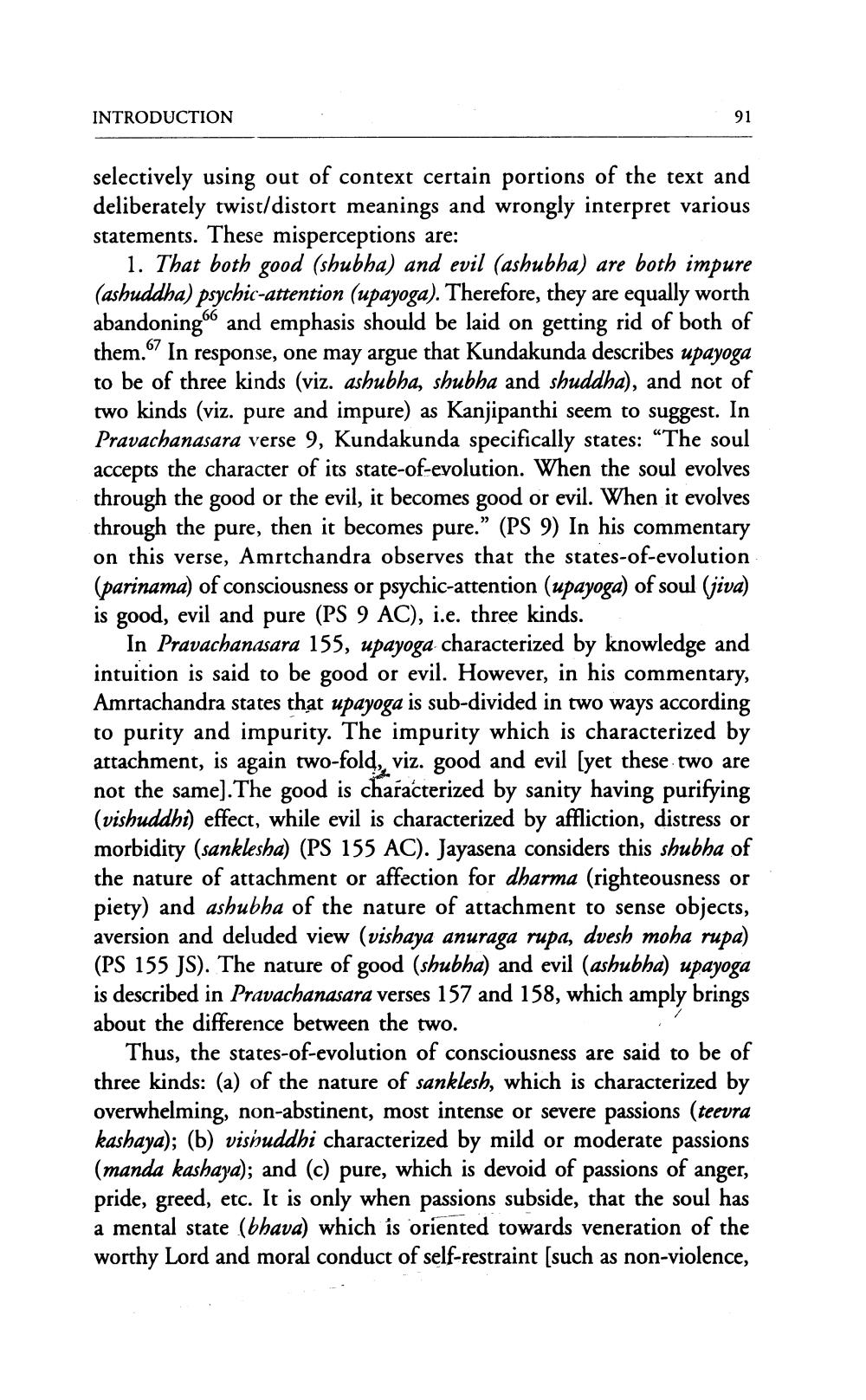________________
INTRODUCTION
91
selectively using out of context certain portions of the text and deliberately twist/distort meanings and wrongly interpret various statements. These misperceptions are:
66
1. That both good (shubha) and evil (ashubha) are both impure (ashuddha) psychic-attention (upayoga). Therefore, they are equally worth abandoning and emphasis should be laid on getting rid of both of them.67 In response, one may argue that Kundakunda describes upayoga to be of three kinds (viz. ashubha, shubha and shuddha), and not of two kinds (viz. pure and impure) as Kanjipanthi seem to suggest. In Pravachanasara verse 9, Kundakunda specifically states: "The soul accepts the character of its state-of-evolution. When the soul evolves through the good or the evil, it becomes good or evil. When it evolves through the pure, then it becomes pure." (PS 9) In his commentary on this verse, Amrtchandra observes that the states-of-evolution (parinama) of consciousness or psychic-attention (upayoga) of soul (jiva) is good, evil and pure (PS 9 AC), i.e. three kinds.
In Pravachanasara 155, upayoga characterized by knowledge and intuition is said to be good or evil. However, in his commentary, Amrtachandra states that upayoga is sub-divided in two ways according to purity and impurity. The impurity which is characterized by attachment, is again two-fold, viz. good and evil [yet these two are not the same]. The good is characterized by sanity having purifying (vishuddhi) effect, while evil is characterized by affliction, distress or morbidity (sanklesha) (PS 155 AC). Jayasena considers this shubha of the nature of attachment or affection for dharma (righteousness or piety) and ashubha of the nature of attachment to sense objects, aversion and deluded view (vishaya anuraga rupa, dvesh moha rupa) (PS 155 JS). The nature of good (shubha) and evil (ashubha) upayoga is described in Pravachanasara verses 157 and 158, which amply brings about the difference between the two.
Thus, the states-of-evolution of consciousness are said to be of three kinds: (a) of the nature of sanklesh, which is characterized by overwhelming, non-abstinent, most intense or severe passions (teevra kashaya); (b) vishuddhi characterized by mild or moderate passions (manda kashaya); and (c) pure, which is devoid of passions of anger, pride, greed, etc. It is only when passions subside, that the soul has a mental state (bhava) which is oriented towards veneration of the worthy Lord and moral conduct of self-restraint [such as non-violence,




